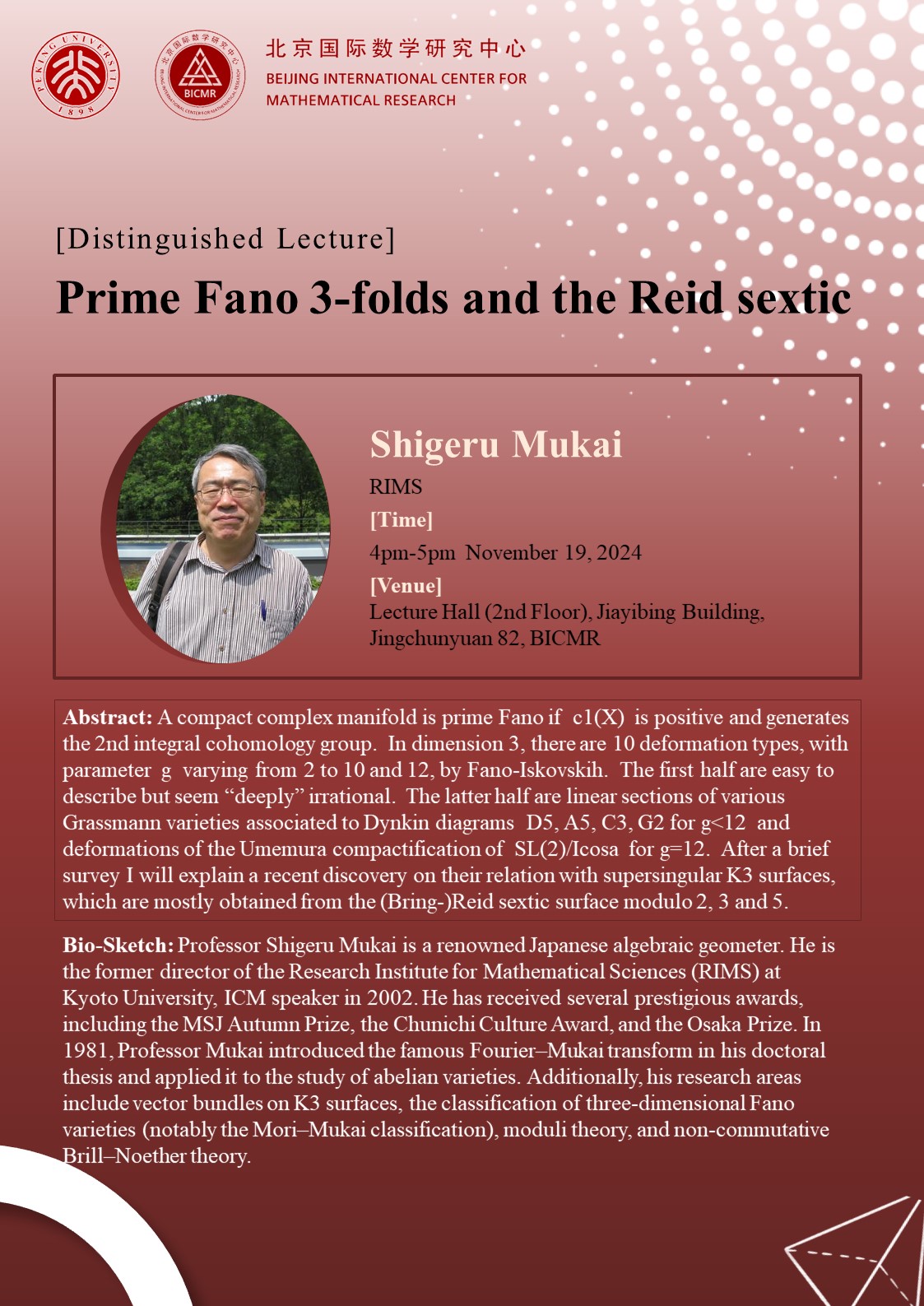[Distinguished Lecture] Prime Fano 3-folds and the Reid sextic
Time: 2024-11-12
Published By: Ruixin Li
Speaker(s): Shigeru Mukai (RIMS)
Time: 16:00-17:00 November 19, 2024
Venue: Lecture Hall, Jiayibing Building, Jingchunyuan 82, BICMR
Abstract: A compact complex manifold is prime Fano if c1(X) is positive and generates the 2nd integral cohomology group. In dimension 3, there are 10 deformation types, with parameter g varying from 2 to 10 and 12, by Fano-Iskovskih. The first half are easy to describe but seem вҖңdeeplyвҖқ irrational. The latter half are linear sections of various Grassmann varieties associated to Dynkin diagrams D5, A5, C3, G2 for g<12 and deformations of the Umemura compactification of SL(2)/Icosa for g=12. After a brief survey I will explain a recent discovery on their relation with supersingular K3 surfaces, which are mostly obtained from the (Bring-)Reid sextic surface modulo 2, 3 and 5.
Bio-Sketch: Professor Shigeru Mukai is a renowned Japanese algebraic geometer. He is the former director of the Research Institute for Mathematical Sciences (RIMS) at Kyoto University, ICM speaker in 2002. He has received several prestigious awards, including the MSJ Autumn Prize, the Chunichi Culture Award, and the Osaka Prize. In 1981, Professor Mukai introduced the famous FourierвҖ“Mukai transform in his doctoral thesis and applied it to the study of abelian varieties. Additionally, his research areas include vector bundles on K3 surfaces, the classification of three-dimensional Fano varieties (notably the MoriвҖ“Mukai classification), moduli theory, and non-commutative BrillвҖ“Noether theory.
Bio-Sketch: Professor Shigeru Mukai is a renowned Japanese algebraic geometer. He is the former director of the Research Institute for Mathematical Sciences (RIMS) at Kyoto University, ICM speaker in 2002. He has received several prestigious awards, including the MSJ Autumn Prize, the Chunichi Culture Award, and the Osaka Prize. In 1981, Professor Mukai introduced the famous FourierвҖ“Mukai transform in his doctoral thesis and applied it to the study of abelian varieties. Additionally, his research areas include vector bundles on K3 surfaces, the classification of three-dimensional Fano varieties (notably the MoriвҖ“Mukai classification), moduli theory, and non-commutative BrillвҖ“Noether theory.



